Elderflower Cordial Recipe
Tips and Recipe from a Practiced Herbalist
For Rebecca Bissonnette, summer is all about preserving the bounty of the land to enjoy year-round. And residing at Triform Camphill Community in New York’s idyllic Hudson River Valley, there’s quite a bounty. With a 420-acre campus lush with forests, fields, and organic, biodynamic farm and gardens, nature provides countless gifts to its stewards. One of the things Rebecca looks forward to most is picking aromatic elderflowers and transforming them into special culinary treats, like elderflower cordial.
Even if you’ve never seen an elderflower, you’ve likely heard of it. St. Germain is an elderflower liqueur popular with mixologists. Prince Harry and Meghan Markle’s wedding cake was flavored with lemon and elderflower. And elderberry syrup has recently gotten mainstream recognition for its antioxidant rich cold-fighting health properties (elderberries are the dark purple berries that grow from elderflowers).
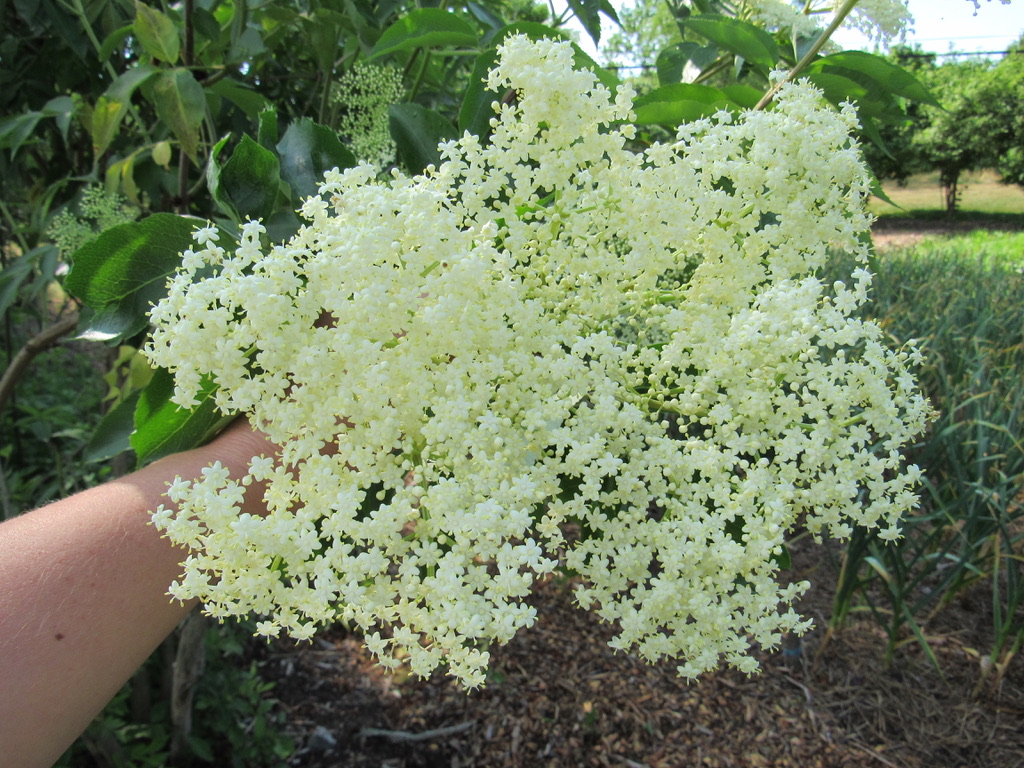
What is elderflower?
Elderflowers are small, creamy white flowers with an alluring, floral aroma that grow on deciduous elderberry shrubs (which can mature to be so large they sometimes resemble trees). They flower in early summer and produce fruit (elderberries) in the fall, both of which can be harvested and used fresh or dried in culinary and medicinal applications.
Rebecca says that while it may seem foreign or fancy, elderflower is actually quite accessible. “Once you learn to identify elderflower, you’ll see it grows everywhere,” she notes. “Maybe not Manhattan everywhere, but out in the country you’ll find it by the roadside or in a park and you won’t hurt anything if you take a few blossoms to make cordial.” If you can, pick blossoms from multiple shrubs rather than just one. And of course, take great caution if you’re an amateur forager as there are other potentially toxic blossoms that look similar to the untrained eye.
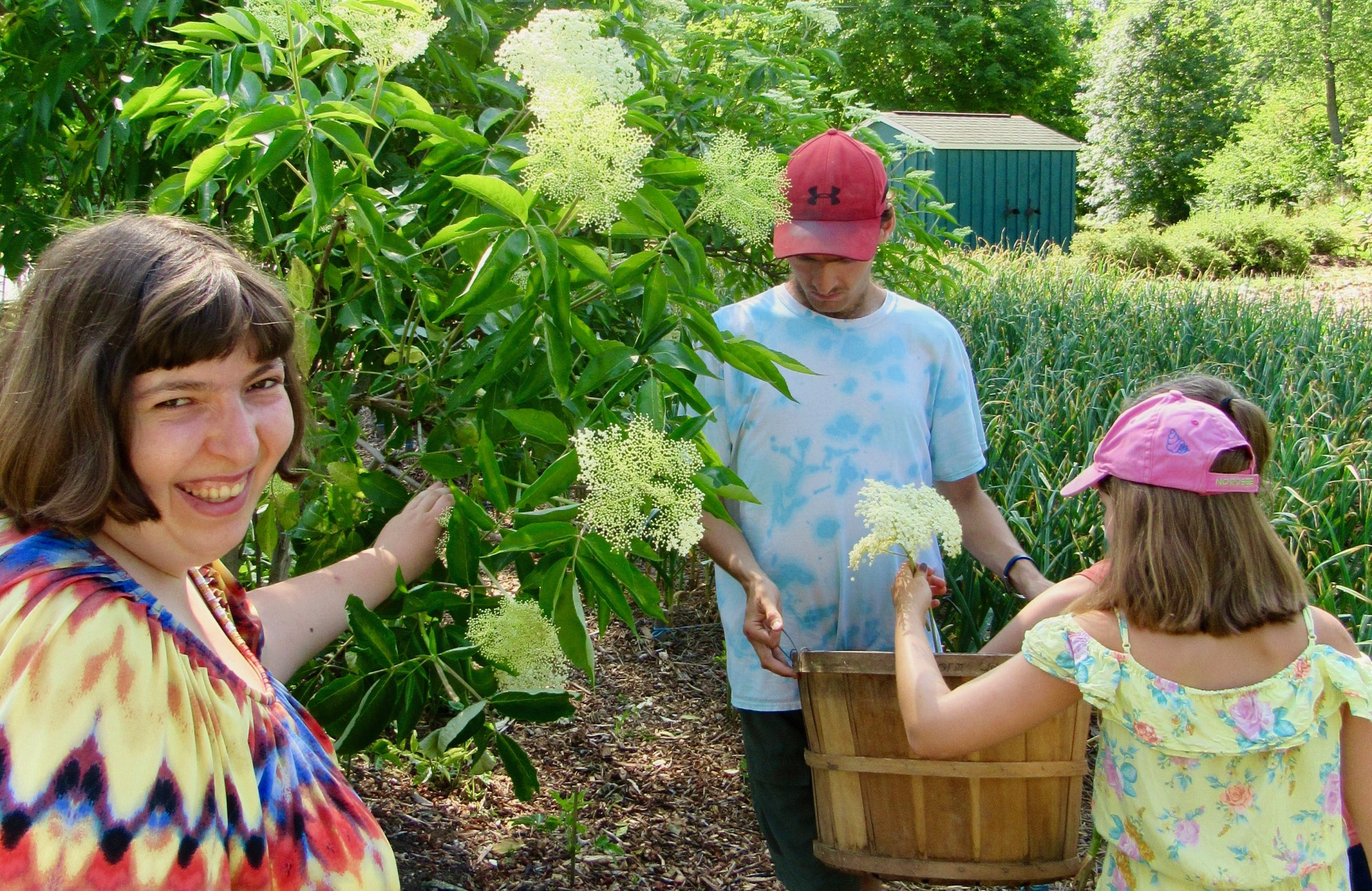
What does elderflower taste like?
Not surprisingly, elderflower has a floral quality to it, but it’s much more delicate than rose or lavender. Rebecca says, “the taste of elderflower has a sweet, aromatic quality. It’s very subtle.” Some people describe a fruity element with traces of pear or lychee, while others characterize it as musky.
Elderflower uses
Elderflower is so much more than just a pretty blossom and can be used in countless ways. It has a number of health benefits and elderflower extract is used in medicines to treat everything from colds and viruses to joint pain. Elderflower also adds an enthralling element to foods and drinks and is used to flavor everything from cakes to teas, and of course cordial.
What is a cordial anyway?
Pinning down a cordial definition can be a bit tricky as it can refer to a wide range of beverages ranging from alcoholic liqueurs to filled candies. In Europe, where elderflower is a much more common ingredient than in the US, elderflower cordial refers to an elderflower-flavored soft drink. Here, the elderflower cordial meaning is a non-alcoholic concentrate that can also be called a squash; in this form it is also often called elderflower syrup.
How to make elderflower cordial
Whatever you want to call it, elderflower cordial is well worth the small bit of effort. If the idea of making your own cordial is intimidating, don’t fear. Rebecca has spent 16 years living and working at Triform, but when she first signed up for a yearlong volunteer position in 2004 she was fresh out of college and didn’t have a clue about any of this. After her first year Rebecca stayed on to be the vegetable gardener and started learning about biodynamic agriculture. “I started teaching myself, reading books, and it wasn’t until many years later that I did a training in actual herbal work,” Rebecca explains (if you’re interested she highly recommends Wild Gather in the Hudson Valley). “The opportunity to be trained through doing is a gift that can be offered to anyone and has been a huge gift that I’ve experienced by being in Camphill.”
“The opportunity to be trained through doing is a gift that can be offered to anyone and has been a huge gift that I’ve experienced by being in Camphill.”
Although making cordial can certainly be a solitary activity, as with most things at Camphill it takes on a collaborative, community spirit in which the volunteers from around the world, coworkers, and residents with developmental differences work hand-in-hand every step of the way.
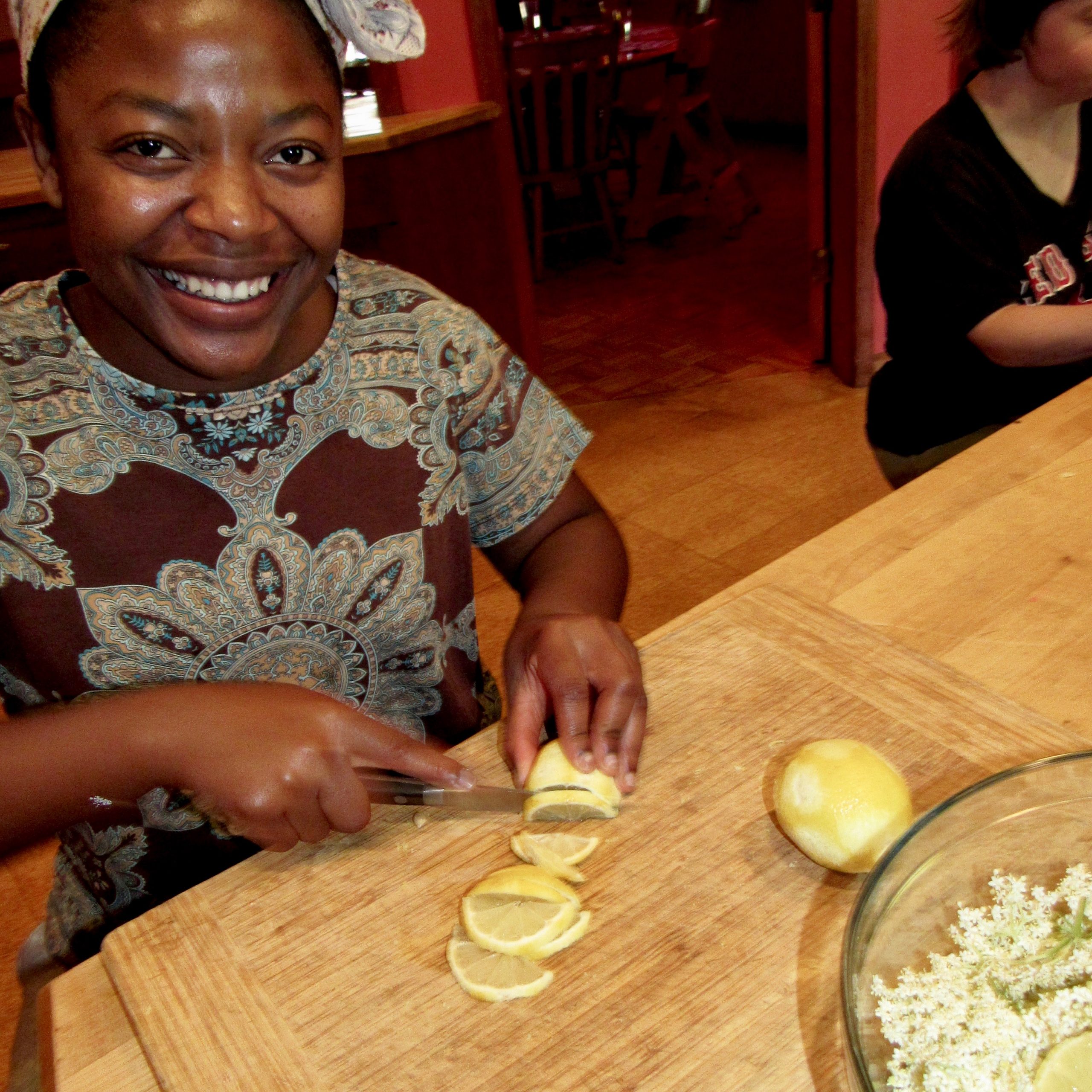
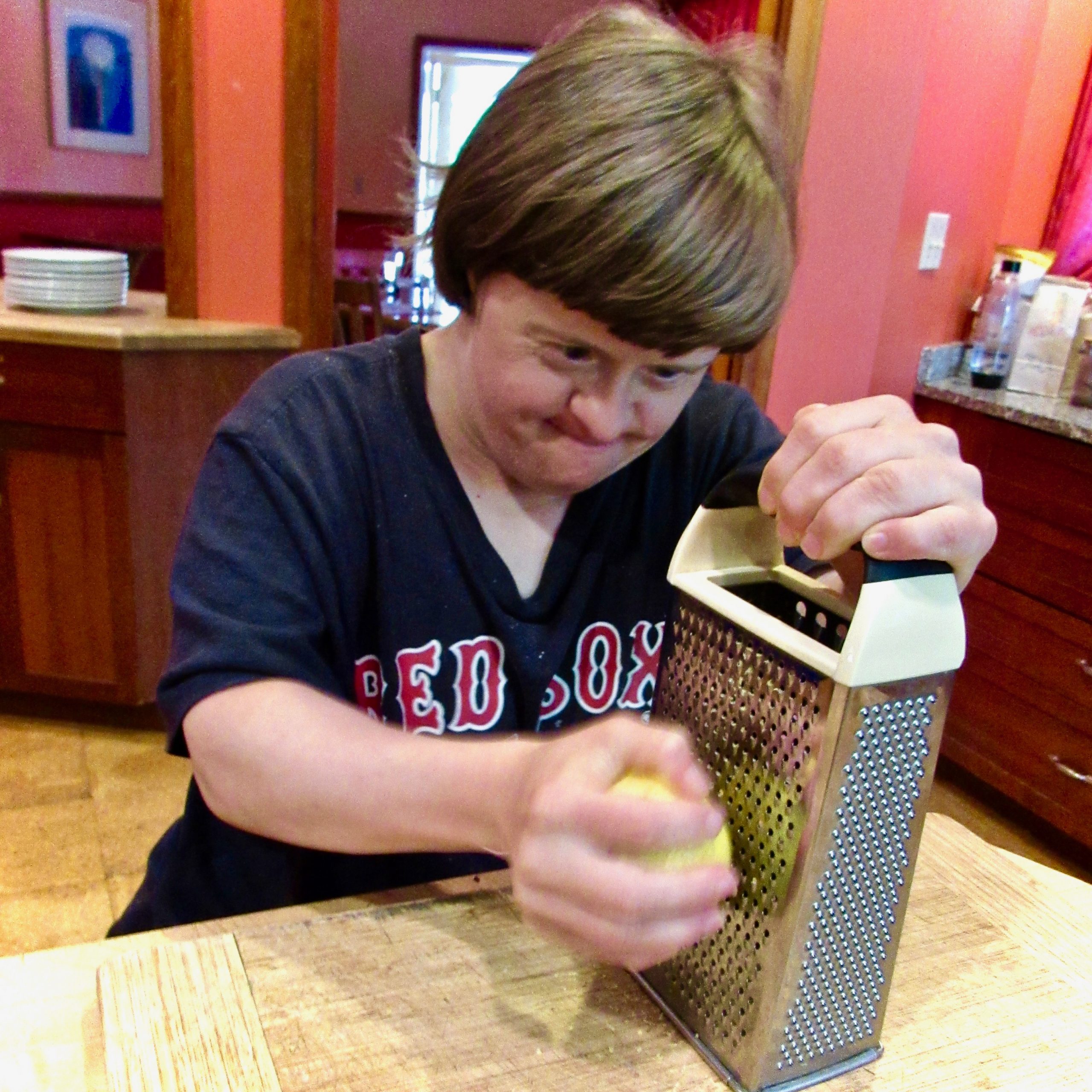
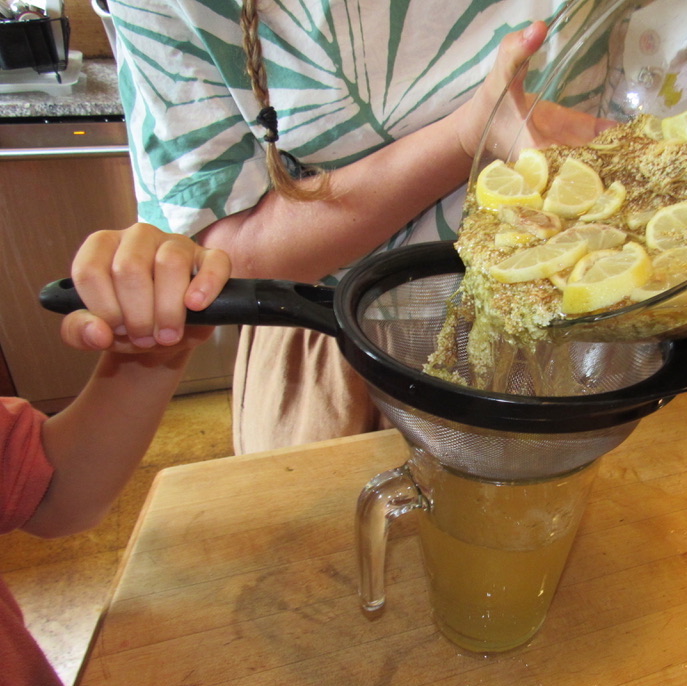
Rebecca did a lot of experimenting, distributing her products to the community, getting feedback, and tweaking. “I found out many things in the herbals remedy world are quite within the realm of the average person in their kitchen to make and they’re not too magical or mystical—though packaging can make them seem that way.”
“Making those products with people for me added a level of interest, enthusiasm, and a kind of mojo that’s healing and kind of an alchemy of the social impulse that’s going into that,” reflects Rebecca. If she knows that someone is particularly interested, Rebecca tries to make sure they are involved in the process; she currently mentors an apprentice who is doing her final project on gardening and herbalism. (Besides elderflower syrup, Rebecca also makes sauerkraut, fire cider, tea mixes, dried herbs, tinctures, salves, infused oils, chest rubs, and more throughout the year.)
“Making those products with people for me added a level of interest, enthusiasm, and a kind of mojo that’s healing and kind of an alchemy of the social impulse that’s going into that.”
The process itself is quite simple: snip the elderflowers off the shrub and remove the stems. Mix with lemon zest and juice and sugar water, let steep for a day or two, then strain and enjoy. The taste, says Rebecca, is “kind of like lemonade but with something magical in it.”
What to do with elderflower cordial
Now that you’ve made the stuff—what do you do with it? The possibilities are endless! It’s not something you’d drink straight; think of it more as a concentrate or flavoring. Add it to ice water or—Rebecca’s favorite—sparkling water or seltzer for a refreshing, non-alcoholic pick-me-up. Mix it with more lemon juice (and sugar or simple syrup to taste) to make elderflower lemonade. To keep things non-alcoholic, shake up a creative elderflower mocktail. Or, if you choose to spike it there are plenty of elderflower cocktail recipes to choose from. You could even drizzle it over pancakes or let it soak into a warm cake for extra flavor.
Elderflower cordial also makes a great gift. If you feel like sharing, put a cute label on a bottle and leave it on a friend’s doorstep for a socially distanced way to let them know you are thinking of them!
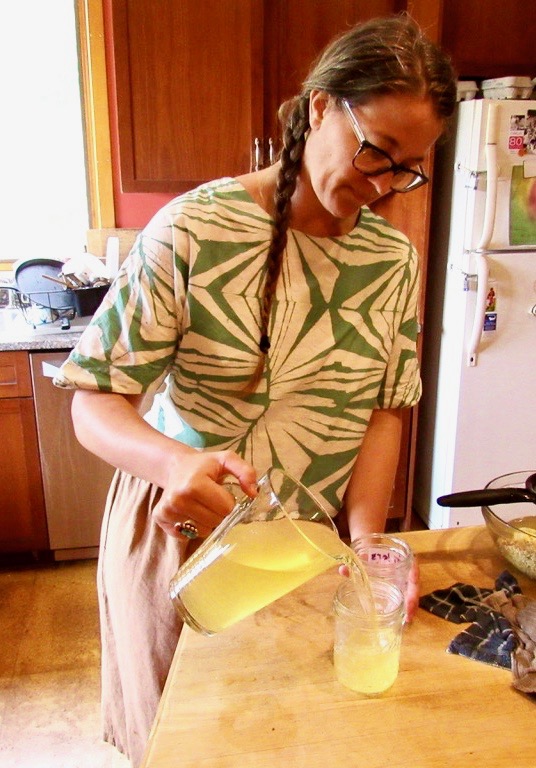
Rebecca’s elderflower cordial tips
- If you’re harvesting your own elderflower, Rebecca says the ideal time is between 8am and 10am because this is after the morning dew has dried and before the blossoms have been bleached by the sun.
- The cordial will be lemon yellow in part because of the lemon juice, but also because of the yellow pollen present in elderflowers.
- Rebecca typically uses white sugar because the proportion of sugar to the final drink you consume is small. However, she says you can substitute any preferred sweetener though it will alter the color and flavor (but still be good!).
- Although the sugar content helps preserve the elderflower cordial, Rebecca recommends storing it in the refrigerator and using within four weeks. (While some recipes contain preservatives this is elderflower cordial without citric acid.)
- You can use dried elderflowers in place of fresh; just use half as much as the recipe calls for.
Elderflower Cordial Recipe
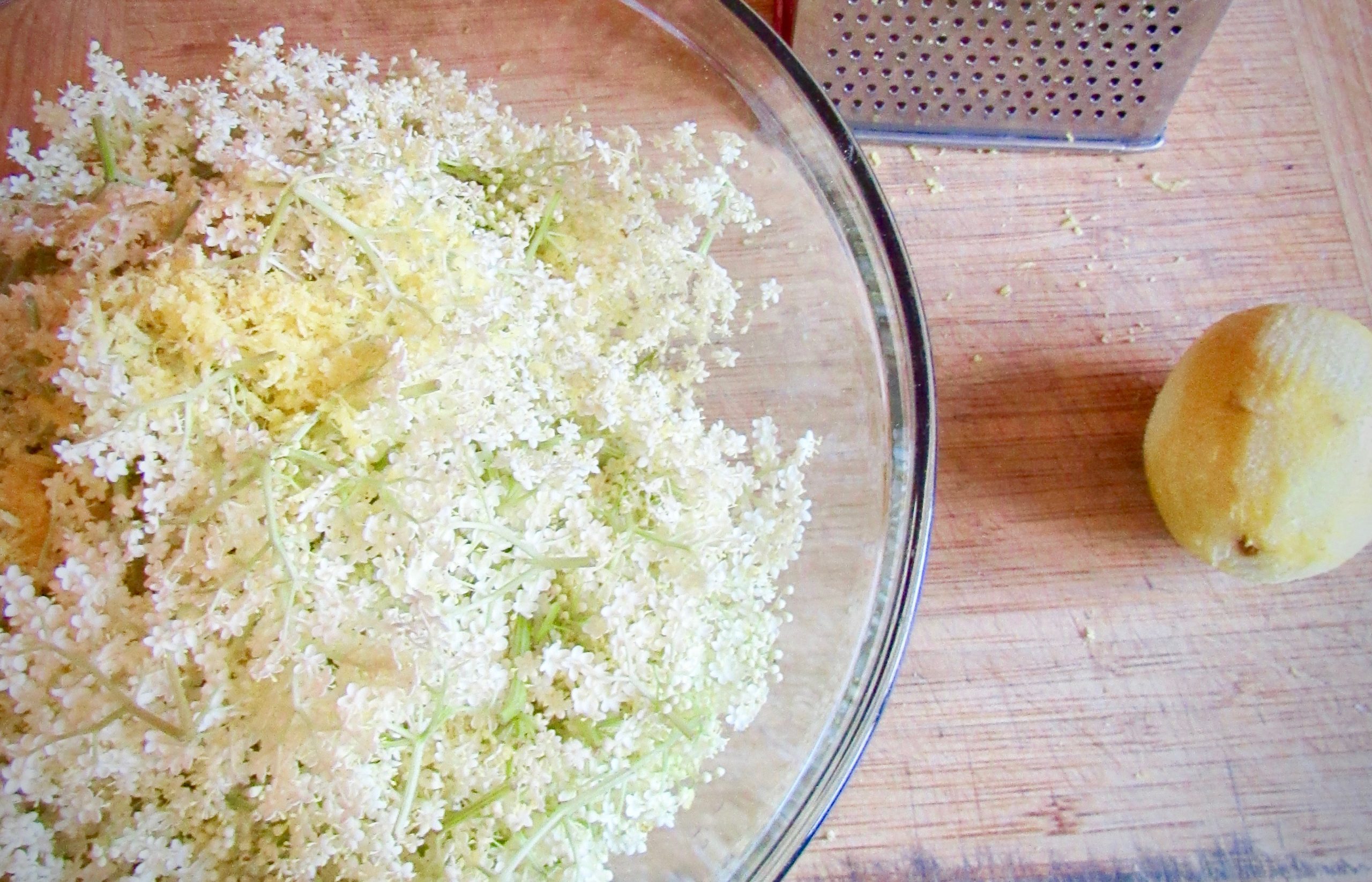
Ingredients:
1 quart water
2 cups sugar*
25 elderflower heads (about 2 cups flowers with stems removed)**
2 lemons zested, juiced, then sliced
Directions:
- Put the water in a pot and bring to a boil. Add the sugar, stir until fully dissolved, and remove from the heat. Let it cool until it is warm, not hot.
- Zest the lemons. Then cut them in half and juice them. Then slice the halves.
- Put the elderflower, lemon zest, lemon juice, and lemon slices in a large bowl.
- Pour the sugar water over the flower and lemon mixture and let sit at room temperature, covered, for 24 to 48 hours.
- Strain the mixture through a fine mesh sieve, pressing gently on the flowers to squeeze out the liquid. Pour into bottles and store in the refrigerator for up to 4 weeks.
Makes about 5 cups of cordial or 80 servings.
*Note: You can also use alternative sweeteners like honey or maple syrup; the color and taste will be different but still very good.
**Note: If you can’t find fresh elderflowers, you can substitute 1 cup dried elderflowers.